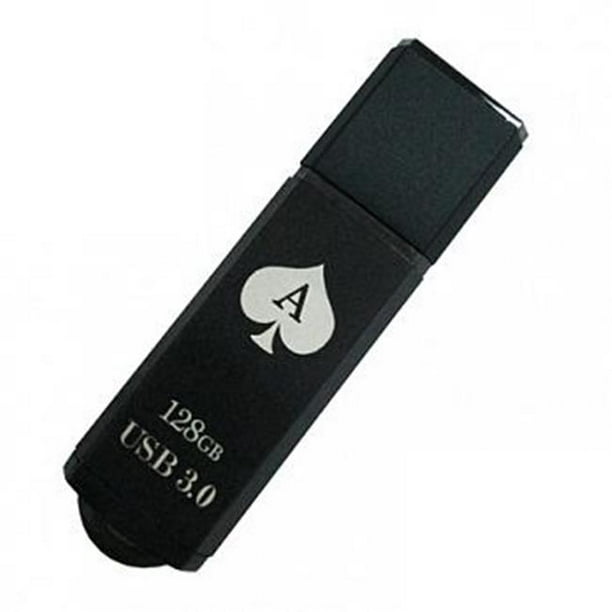Gb Poker

- GPokr is a free texas holdem poker game that is played in monthly competitions.
- A single layer DVD+R disc can hold about 4.7 GB. A dual-layered DVD+R disc can hold about 8.5 GB. A single layer Blu-ray can hold about 25 GB. A dual-layered Blu-ray can hold about 50 GB. Unicode character. The 'gigabyte' symbol is encoded by Unicode at code point U+3387 ㎇ SQUARE GB ㎇. Orders of magnitude (data).
- 'GB' and 'GC' mean 'good bet' and 'good call.' From my experience these are used less sarcastically than 'wp'. 'Gb' and 'gc' are more often genuine compliments. So is also 'NH,' which stands for 'nice hand.' 'GL' means 'good luck.' It is often said at the end of a session to your opponent and sometimes players say it before a heads-up session.
In a world where everyone is looking for a convenient source of entertainment, Poker is one of the most popular choices. This classic game appeals to players of all ages. It is particularly popular throughout the UK but is also a major past time in the U.S. as well.
Poker in the UK
When the U.K. first discovered Poker they didn’t embrace it as they do now. During the middle of the 19th century, Britain was introduced to the game. The introduction came in the form of an 1872 letter addressed to General Schenck. The letter came from America’s ambassador and described the game now known as Poker. It inspired a book that was meant to guide players through the rules of the game.
Discover AORUS premium graphics cards, ft. WINDFORCE cooling, RGB lighting, PCB protection, and VR friendly features for the best gaming and VR experience!
Even so, more than a century would pass before people throughout Britain began to sit up and take notice of Poker. Card games were already popular in the UK and it was only a matter of time before people embraced Poker as one of them.
During the 1950 and 1960s, Poker could only be played at unlicensed gaming halls. In the minds of many Britains, this made the game untrustworthy. However, by the end of the 20th century, the U.K. was beginning to pay more attention to the game.
Much of the credit for the popularity of Poker in the U.K. goes to the 1999 debut of “Late Night Poker.” This was a series of games that were televised throughout the country. In these games, celebrities competed with professional Poker players. By doing so, they gave Britain confidence that the game could be trusted. In response, casinos throughout Britain added Poker to their table games.
“Late Night Poker” was so popular that it inspired a spinoff show featuring regular people playing the game. This is also when people began to have access to the game without having to leave home. By the start of the 21st century, British players had their share of online casinos to choose from. This led to the holding of regular online Poker tournaments, instilling even more confidence in Britains.
World Series of Poker
Before long, the World Series of Poker (WSOP) was a must-see TV event for U.K. residents. Having originated in the U.S. (where Poker is also extremely popular,) many other countries have followed suit, including the World Series of Poker Europe (WSOPE), which was the first to do so.
While the U.S. version of WSOP has been held since 1970, the first WSOPE was held in London in 2007. The winner of the 2007 WSOPE was 18-year old Annette Obrestad. She made history for being the youngest ever winner of the WSOP. This is one of the main differences between the U.S. and U.K.’s versions of WSOP, as the minimum gambling age in the U.S. is 21 rather than 18.
Prior to the formation of WSOPE, many Britains would make the trip to America every year to compete in the WSOP. The U.S. and the U.K. have always been the top players in the tournament. No other countries players have been able to match their level of success. Throughout the history of the WSOP, the only UK player to ever win was a man from Ireland, named Noel Furlong.
In both the U.S. and the U.K. the WSOP can be viewed online. This has gone a long way in making Poker an even more popular and accessible game.
Online Poker Laws
While Poker is equally popular in the U.S. and the U.K. the laws governing playing it online are very different. Restrictions are placed on many of America’s 50 states prohibiting their residents from playing for real money. Yet in the U.K., the laws are much more relaxed when it comes to online Poker.
Any website that is properly regulated is permitted to offer Poker to U.K. players. They can participate in online Poker games no matter where the site they are playing them at is based in. And when they do win money, they are not required to pay taxes on it. The UK government does not want its Poker players having to report losses. This would be required if taxes were taken out of their winnings. For professional poker players, this is extremely convenient. All they have to do to avoid paying taxes is to prove their money came from winning games of Poker.
Gb Pokemon
All Said
Poker continues to be a driving force throughout the U.K. Between casual and professional players the game is enjoying a level of popularity that it never has before.
| Multiple-byte units | |||||||||||||||||||||||||||||||||||||||||||||||||||||||||||||||||||||||||||||||||
|---|---|---|---|---|---|---|---|---|---|---|---|---|---|---|---|---|---|---|---|---|---|---|---|---|---|---|---|---|---|---|---|---|---|---|---|---|---|---|---|---|---|---|---|---|---|---|---|---|---|---|---|---|---|---|---|---|---|---|---|---|---|---|---|---|---|---|---|---|---|---|---|---|---|---|---|---|---|---|---|---|---|
|
| ||||||||||||||||||||||||||||||||||||||||||||||||||||||||||||||||||||||||||||||||
| Orders of magnitude of data | |||||||||||||||||||||||||||||||||||||||||||||||||||||||||||||||||||||||||||||||||
The gigabyte (/ˈɡɪɡəbaɪt,ˈdʒɪɡə-/)[1] is a multiple of the unit byte for digital information. The prefixgiga- means 109 in the International System of Units (SI). Therefore, one gigabyte is one billion bytes. The unit symbol for the gigabyte is GB.
This definition is used in all contexts of science, engineering, business, and many areas of computing, including hard drive, solid state drive, and tape capacities, as well as data transmission speeds. However, the term is also used in some fields of computer science and information technology to denote 1073741824 (10243 or 230) bytes, particularly for sizes of RAM. The use of gigabyte may thus be ambiguous. Hard disk capacities are described and marketed by drive manufacturers using the standard metric definition of the gigabyte, but when a 400 GB drive's capacity is displayed by, for example, Microsoft Windows, it is reported as 372 GB, using a binary interpretation. To address this ambiguity, the International System of Quantities standardizes the binary prefixes which denote a series of integer powers of 1024. With these prefixes, a memory module that is labeled as having the size '1GB' has one gibibyte (1GiB) of storage capacity. Using the ISQ definitions, the '372 GB' reported for the hard drive is actually 372 GiB (400 GB).
Definition[edit]
The term gigabyte has a standard definition of 10003 bytes, as well as a discouraged imprecise meaning of 10243 bytes. The latter binary usage originated as compromise technical jargon for byte multiples that needed to be expressed in a power of 2, but lacked a convenient name. As 1024 (210) is approximately 1000 (103), roughly corresponding to SI multiples, it was used for binary multiples as well.
In 1998 the International Electrotechnical Commission (IEC) published standards for binary prefixes, requiring that the gigabyte strictly denote 10003bytes and gibibyte denote 10243 bytes. By the end of 2007, the IEC Standard had been adopted by the IEEE, EU, and NIST, and in 2009 it was incorporated in the International System of Quantities. Nevertheless, the term gigabyte continues to be widely used with the following two different meanings:
Base 10 (decimal)[edit]

- 1 GB = 1000000000 bytes (= 10003 B = 109 B)
Based on powers of 10, this definition uses the prefix giga- as defined in the International System of Units (SI). This is the recommended definition by the International Electrotechnical Commission (IEC).[2] This definition is used in networking contexts and most storage media, particularly hard drives, flash-based storage,[3][4][5] and DVDs, and is also consistent with the other uses of the SI prefix in computing, such as CPU clock speeds or measures of performance. The file manager of Mac OS X version 10.6 and later versions are a notable example of this usage in software, which report files sizes in decimal units.[6]
Base 2 (binary)[edit]
- 1 GiB = 1073741824 bytes (= 10243 B = 230 B).
The binary definition uses powers of the base 2, as does the architectural principle of binarycomputers.This usage is widely promulgated by some operating systems, such as Microsoft Windows in reference to computer memory (e.g., RAM). This definition is synonymous with the unambiguous unit gibibyte.
Consumer confusion[edit]
Since the first disk drive, the IBM 350, disk drive manufacturers expressed hard drive capacities using decimal prefixes. With the advent of gigabyte-range drive capacities, manufacturers based most consumer hard drive capacities in certain size classes expressed in decimal gigabytes, such as '500 GB'. The exact capacity of a given drive model is usually slightly larger than the class designation. Practically all manufacturers of hard disk drives and flash-memory disk devices[3][4] continue to define one gigabyte as 1000000000bytes, which is displayed on the packaging. Some operating systems such as OS X[7] express hard drive capacity or file size using decimal multipliers, while others such as Microsoft Windows report size using binary multipliers. This discrepancy causes confusion, as a disk with an advertised capacity of, for example, 400 GB (meaning 400000000000bytes) might be reported by the operating system as 372 GB, meaning 372 GiB.
The JEDEC memory standards use IEEE 100 nomenclature which quote the gigabyte as 1073741824bytes (230 bytes).[8]

The difference between units based on decimal and binary prefixes increases as a semi-logarithmic (linear-log) function—for example, the decimal kilobyte value is nearly 98% of the kibibyte, a megabyte is under 96% of a mebibyte, and a gigabyte is just over 93% of a gibibyte value. This means that a 300 GB (279 GiB) hard disk might be indicated variously as 300 GB, 279 GB or 279 GiB, depending on the operating system. As storage sizes increase and larger units are used, these differences become even more pronounced.
32 Gb Micro Sd Card

US lawsuits[edit]
The most recent lawsuits arising from alleged consumer confusion over the binary and decimal definitions used for 'gigabyte' have ended in favor of the manufacturers, with courts holding that the legal definition of gigabyte or GB is 1 GB = 1,000,000,000 (10^9) bytes (the decimal definition) rather than the binary definition (2^30) for commercial transactions. Specifically, the courts held that 'the U.S. Congress has deemed the decimal definition of gigabyte to be the 'preferred' one for the purposes of 'U.S. trade and commerce' .... The California Legislature has likewise adopted the decimal system for all 'transactions in this state.'”[9]
Earlier lawsuits had ended in settlement with no court ruling on the question, such as a lawsuit against drive manufacturer Western Digital.[10][11] Western Digital settled the challenge and added explicit disclaimers to products that the usable capacity may differ from the advertised capacity.[10]Seagate was sued on similar grounds and also settled.[10][12]
Other contexts[edit]
Because of their physical design, the capacity of modern computer random access memory devices, such as DIMM modules, is always a multiple of a power of 1024. It is thus convenient to use prefixes denoting powers of 1024, known as binary prefixes, in describing them. For example, a memory capacity of 1073741824bytes is conveniently expressed as 1 GiB rather than as 1.074 GB. The former specification is, however, often quoted as '1 GB' when applied to random access memory.[13]
Gb Poker Card
Software allocates memory in varying degrees of granularity as needed to fulfill data structure requirements and binary multiples are usually not required. Other computer capacities and rates, like storage hardware size, data transfer rates, clock speeds, operations per second, etc., do not depend on an inherent base, and are usually presented in decimal units. For example, the manufacturer of a '300 GB' hard drive is claiming a capacity of 300000000000bytes, not 300x10243 (which would be 322122547200) bytes.
Examples of gigabyte-sized storage[edit]
- One hour of SDTV video at 2.2 Mbit/s is approximately 1 GB.
- Seven minutes of HDTV video at 19.39 Mbit/s is approximately 1 GB.
- 114 minutes of uncompressed CD-quality audio at 1.4 Mbit/s is approximately 1 GB.
- A single layer DVD+R disc can hold about 4.7 GB.
- A dual-layered DVD+R disc can hold about 8.5 GB.
- A single layer Blu-ray can hold about 25 GB.
- A dual-layered Blu-ray can hold about 50 GB.
Unicode character[edit]
The 'gigabyte' symbol is encoded by Unicode at code point U+3387㎇SQUARE GB ❰ ㎇ ❱.[14]
See also[edit]
References[edit]
- ^The prefix giga- may be pronounced two ways. Gigabyte - Definition and More from the Free Merriam-Webster Dictionary
- ^http://physics.nist.gov/cuu/Units/binary.html Prefixes for binary multiples
- ^ abSanDisk USB Flash DriveArchived 13 May 2008 at the Wayback Machine 'Note: 1 megabyte (MB) = 1 million bytes; 1 gigabyte (GB) = 1 billion bytes.'
- ^ abStorage Chart 'Megabyte (MB) = 1,000,000 bytes; 1 Gigabyte (GB) = 1,000,000,000 bytes; 1TB = 1,000,000,000,000 bytes'
- ^[1]
- ^'How Mac OS X reports drive capacity'. Apple Inc. 27 August 2009. Retrieved 16 October 2009.
- ^'How OS X and iOS report storage capacity - Apple Support'. support.apple.com. Retrieved 29 June 2016.
- ^JEDEC Solid State Technology Association (December 2002). 'Terms, Definitions, and Letter Symbols for Microcomputers, Microprocessors, and Memory Integrated Circuits'(PDF). Jesd 100B.01.
- ^'Order Granting Motion to Dismiss'(PDF). United States District Court. Retrieved 24 January 2020.
- ^ abcMook, Nate (28 June 2006). 'Western Digital Settles Capacity Suit'. betanews. Retrieved 30 March 2009.
- ^Baskin, Scott D. (1 February 2006). 'Defendant Western Digital Corporation's Brief in Support of Plaintiff's Motion for Preliminary Approval'. Orin Safier v. Western Digital Corporation. Western Digital Corporation. Retrieved 30 March 2009.
- ^Judge, Peter (26 October 2007). 'Seagate pays out over gigabyte definition'. ZDNet. Retrieved 16 September 2014.
- ^Percival, Colin. 'Why is 1 GB equal to 10^9 bytes instead of 2^30?'. tarsnap.com. Retrieved 1 November 2015.
- ^Unicode Consortium (2019). 'The Unicode Standard 12.0 – CJK Compatibility ❰ Range: 3300—33FF ❱'(PDF). Unicode.org. Retrieved 24 May 2019.